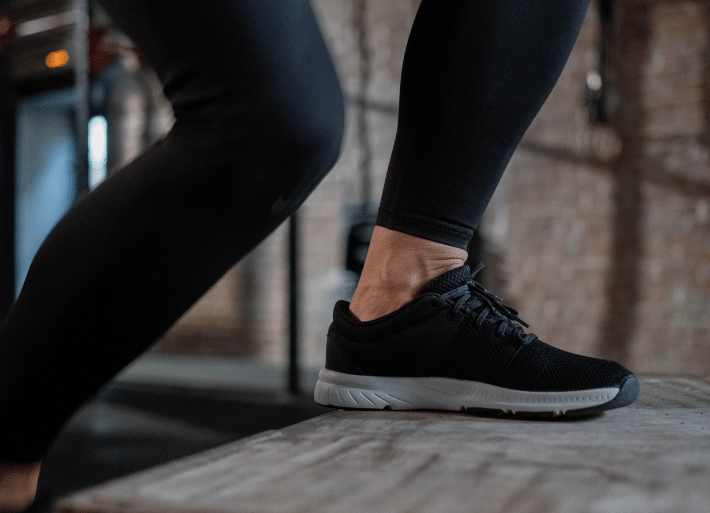
Jumps Training for Young Athletes: Plyometric Training
By Ben Hawkes
WHAT IS PLYOMETRIC TRAINING?

I once trained with a guy who, one session - in the name of plyometric training - made his way around a full-sized 400m athletics track not by running but by continuous bunny jumping. Not surprisingly, he ended up injured after that session, got laughed at and had to sit out a couple of days of training (and school PE lessons) to recover. Hi Joe 👋🏼
Anyway...
THE PHYSIOLOGY OF PLYOMETRICS

Plyometric training is generally considered to be an all-encompassing term for jumping and landing training. It is used to increase an athlete's jumping performance, maximal power output and to reduce propensity for injury.
It is a useful adjunct to technical training sessions and proves effective for athletes across all events and sports due to the physiological adaptations it creates within muscle, tendon and other connective tissue. What's more, in the jumping events like LJ, TJ, HJ, and (to an extent) PV, jump performance (funnily enough) is the performance outcome - so it helps to be good at them.
Although an often forgotten fact, plyometric exercise is not limited to the lower body and jumping. Indeed, almost all throwing movements are examples of upper body plyometric exercises. Medicine ball training too can be another useful source of plyometric training stimulus. This article will focus more on jump-land plyometric training, but the principles are equally relevant to upper body plyometric training.
WHAT DOES 'PLYOMETRIC' EVEN MEAN?

A movement can be considered 'plyometric' only when it utilises a muscle's stretch-shortening cycle (SSC). To do this, ground contact time (or, more generally, time to contract) must be under 500ms (1/2s) for a slow SSC and under 250ms (1/4s) for a fast SSC.
We can use this information to inform our programming and exercise selection, as detailed later in this article.
COACHING PLYOMETRICS: HOW, WHAT, WHEN?
PLYOMETRIC TECHNIQUE

Clearly, the scope of this article is not to go into the fine technical details of each different jumping and landing movement. What we will do, though, is discuss some guiding principles to strive for across most jump-land movements.
POSTURE FOR PLYOMETRICS

Generally, we want to cue a tall, proud posture that makes us feel like we're floating above our hips. This allows the legs more freedom to find better positions to produce force and gives athletes more opportunity to learn the skill of holding a strong, stable posture similar to what we want to see in MaxV running.
"Maintaining an upright trunk and a neutral pelvic position that allows reaching a higher knee lift position during the swing that would allow a subsequent active leg motion to "punch" the swing leg into the ground as well as a reduced touchdown distance (reduced horizontal distance between foot ground contact and center of mass), resulting in lower braking antero-posterior and higher vertical components of the ground reaction forces."
All this to say, holding posture better across a number of movements, including plyos, will probably make you sprint faster.
PLYOMETRIC EXERCISE VOLUME

The body part making contact with the ground is arguably the most important when it comes to applying the force you've created. You can have the most powerful engine in the world, but if your tyres are flat, you're going nowhere.
Plyometrics are beneficial for this in two ways: they strengthen and condition the tissues and structures that make a ground contact efficient (or inefficient). They also give athletes opportunities to learn the skill of ground contact technique in progressively more intense movements.
The essence of an efficient ground contact is as follows:
- Pretension at the ankle and knee. Athletes should be prepared for ground contact with dorsiflexed toes and strong, stable ankles going into contact.
- Striking of the ground underneath - not massively front of - the centre of mass (see the earlier quote from Mendiguchia et al. (2021) around braking forces).
- Flat-footed/rolling heel contacts. This is an extension of the idea of pretension, but a toe-y ground contact makes for soft ankles and lengthens ground contact time, thus preventing SSC utilisation. A nice cue for this is asking athletes to "aim for the back row of spikes" upon striking the ground.
PROGRESSING WITH PLYOMETRIC EXERCISE

The biggest mistake coaches make with jumps training is prescribing too much volume in too intense movements, too soon.
This is less of an issue with many upper body plyometrics because shifting your bodyweight is far more difficult than moving, say, a medicine ball - so the progression is more obvious. But when dealing with bodyweight, such as in a handspring or jumping and landing, we need to think more carefully about what principles we want to be guided by when it comes to progression.
Two main factors regulate jump intensity:
- Eccentric Load/Ground Reaction Force
- Ground Contact Time
Eccentric load is a measure of Ground Reaction Force - the amount of force we need to overcome to not end up as a slab of meat on the floor - while ground contact time is, well, as it sounds - how long we're in contact with the ground. Essentially, it's a measure of how quickly we overcome that eccentric load and rebound off the ground. The two are somewhat correlated in that if we try to recover more rapidly, GRF will be higher than if we are merely sticking a jump landing (not rebounding).
TRANSLATING PLYOMETRIC THEORY INTO PRACTICE

When working with young athletes - in terms of biological maturity and training age - it's important to remember that high eccentric load and short GCTs will be more challenging to perform correctly, making it difficult to learn the *skill* of jumping.
We can reduce the eccentric load by reducing the speed at which athletes hit the ground (reducing the height they drop from). Creating longer GCTs should be self-explanatory by now, but a shorter GCT just means the athlete spends less time on the ground.
Exercises with low GRF and/or long GCT could be categorised as 'extensive' plyometric training, while more intense jumping can be categorised as 'intensive' plyometrics. This allows us to have more of an idea of how to programme different exercises, but it shouldn't be taken as gospel.
Considerations such as the following should all be factored in when putting together a jumps training programme...
- The direction of travel (horizontally oriented jumps will produce lower GRFs than vertical jumps)
- Ground surfaces (Harder surfaces create higher GRFs)
- Bi-/unilateral landings (landing on one leg stresses tissues far more than landing on two legs)
Soft versus hard soft change of direction. Cool little visual I made pic.twitter.com/4dCaGXFISO
— Max Schmarzo (sbs) (@strong_science) November 20, 2021
Moreover, an athlete's level of intent when performing jumps (and indeed any other training modality) has a huge effect on the stimulus - and therefore adaptation - they receive. Indeed, if we look back to the beginning of this article, I mentioned that knowledge of SSC-inducing contraction speeds could help guide our coaching delivery.
All these things regulate jump intensity, so it's important to consider each of them.
If the goal of an exercise is to improve horizontal power production (as in, say, two-legged jumps for distance), and our athlete is not applying maximal force (whether that be because they need technical correction, are too tired or because they simply don't want to), they probably aren't within or close to the ground contact times necessary to employ and develop the SSC in relevant muscle groups.
If this is the case, what's the point of doing the exercise in the first place?
PLYOMETRICS AND PERFORMANCE

Plyometric exercise is perhaps one of the most misunderstood elements of the training toolbox. Once explained, many considerations seem obvious - but until that point, jumps seem like jumps and people who make them look easy look like athletic gods.
We can all strive to improve our training, though, and in my opinion, plyometrics is one of the best modalities to get better at.

Leave a comment